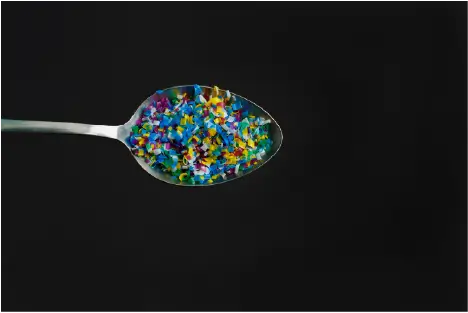In today's world, the conversation around diet and health is evolving beyond just the nutritional value of what's on our plates. A concerning element has quietly infiltrated our meals, one that is neither nutritious nor digestible: microplastics. Recent studies reveal that the average person could be consuming approximately 11,000 pieces of microplastic each year. This blog post delves into the world of microplastics, their sources, impacts on health, and what we can do to mitigate their presence in our lives.
What are Microplastics?
Microplastics are tiny plastic particles less than 5 millimeters in size. They arise from the degradation of larger plastic products in our environment, which can result from various factors including exposure to UV light, physical abrasion, and biological degradation. These minuscule particles have found their way into almost every corner of the Earth, from the deepest oceans to the highest mountains.
Sources of Microplastics in Our Diet
Seafood: One of the primary sources of dietary microplastics. As marine creatures ingest microplastics, these particles enter the food chain, ultimately reaching our plates.
Bottled Water: Studies have shown that bottled water can contain hundreds of microplastic particles per liter.
Salt: Sea salt is another common dietary source, due to the contamination of seawater with microplastics.
Fruits and Vegetables: Recent research suggests that microplastics may also be present in agricultural soil, leading to their absorption by fruits and vegetables.
Health Implications
The long-term health effects of microplastic consumption are still under investigation, but the potential for harm is clear. Microplastics can carry pollutants and toxic chemicals that adhere to their surfaces, which may then be released into the body upon ingestion. There's also concern about the physical damage they could cause to the digestive tract.
Mitigating Microplastic Consumption
Reduce Plastic Use: Minimizing the use of single-use plastics and supporting products with sustainable packaging can help reduce the production of microplastics.
Choose Fresh and Organic: Whenever possible, opt for fresh, organic produce and unpackaged food items.
Filter Water: Consider using a water filter that can reduce the presence of microplastics in tap water.
Support Cleanup Efforts: Engage with and support environmental organizations working to clean up plastic pollution in oceans, rivers, and communities.
The ubiquity of microplastics in our environment and diet is a stark reminder of the pervasive impact of plastic pollution. While the full health implications are yet to be fully understood, it's clear that action is needed both at the individual and systemic levels to address this issue. By making conscious choices about our consumption habits and advocating for policies that reduce plastic waste, we can work towards a future where our diets are free from these invisible intruders.






